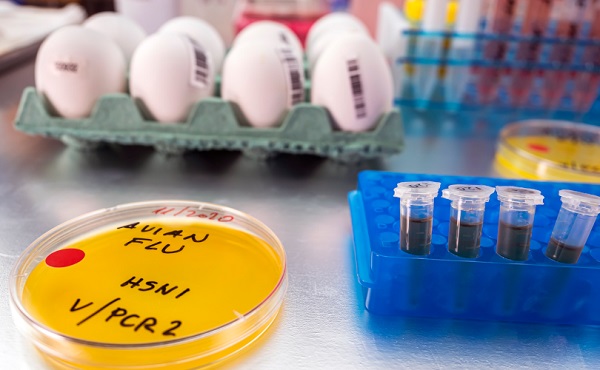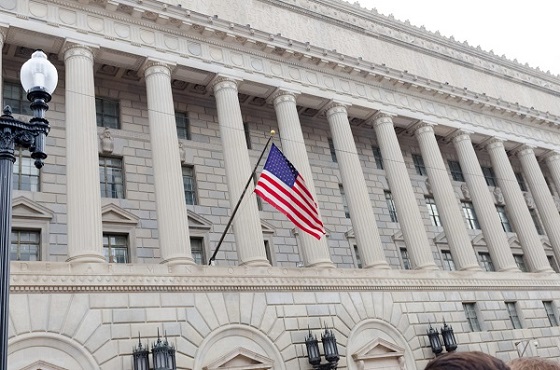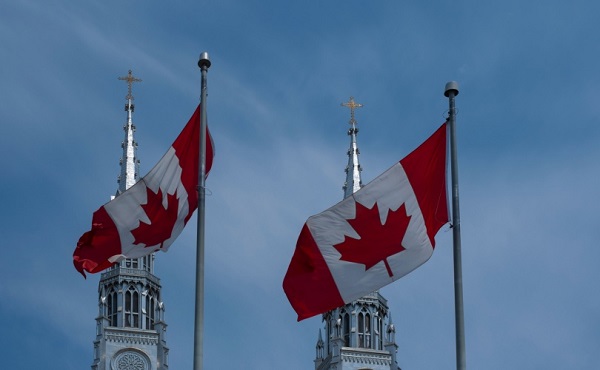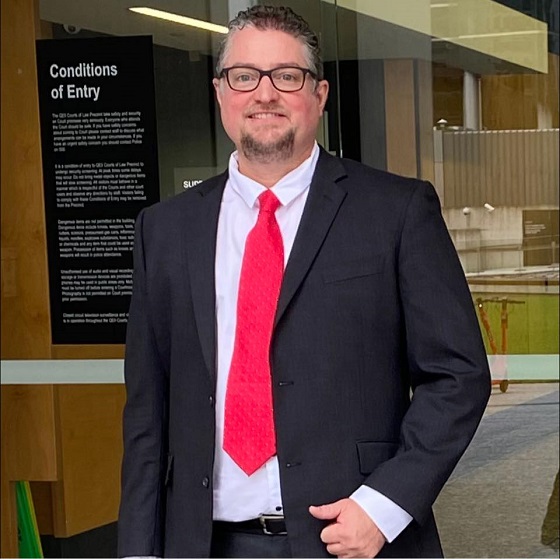Opinion
How Christianity Remade the World

Tom Holland joins Bari Weiss on Honestly (The Free Press)
Interview courtesy of The Free Press
| By Bari Weiss |
This Christmas, one of our greatest living historians explains how one ‘radical message’ came to define the entirety of the Western world.
Is our vacation from religion coming to an end?
Whether you believe in the story of the virgin birth and resurrection, or you believe that those miracles are myths, one thing is beyond dispute: The story of Jesus and the message of Christianity is among the stickiest ideas the world has ever seen.
Within four centuries of Jesus’s death, Christianity had become the official religion of the Roman Empire. It had 30 million followers—which amounted to half the empire. Today, two millennia later, Christianity is still the largest religion in the world, with more than 2 billion adherents.
How did the radical message of Christianity catch on? How did it change the world? And how does it shape all our lives today?
These questions motivate the latest episode of Honestly. My guest is the incredible historian Tom Holland, one of the most gifted storytellers in the world. His podcast, The Rest Is History, is among the most popular out there. Each week, he and his co-host, Dominic Sandbrook, charm their way through history’s most interesting characters and sagas. I can’t recommend it more highly.
I also recommend Tom’s book Dominion: How the Christian Revolution Remade the World. In it, he argues that Christianity is the reason we have America, that it was the inspiration behind our revolution. He also argues that Christianity is the backbone of both “wokeness,” as an ideology, and liberalism, which so often sees itself as secular.
In today’s episode, Tom discusses all this and more, including a question that a lot of my colleagues have thought about this year: Is our vacation from religion coming to an end?
Click below to listen to the podcast, or scroll down for an edited transcript of our conversation. Merry Christmas and happy holidays!
|
|
Tom Holland on How Christianity Remade the World
The Free Press Episode |
On the radical story of Jesus’s death:
Bari Weiss: Your book opens with the crucifixion. Your argument is that the turning point is not Jesus’s birth, but his death, at 33 years old, at the hands of the Roman authorities. Why is this the pivotal moment?
Tom Holland: It is very difficult to overemphasize how completely mad it was for everybody in the ancient world that someone who suffers crucifixion could in any way be the Messiah, let alone part of the one God. In the opinion of the Romans, crucifixion is the fate that should properly be visited on slaves. Not just because it is protracted and agonizing, but also because it is deeply humiliating.
When you die, you will hang there like a lump of meat. This is a demonstration, in the opinion of the Romans, that essentially their might is right. That if a slave rebels against his master, this is what happens.
I think what is radical about what Christians come to believe is not the fact that a man can become a god. Because for most people in the Mediterranean that is a given. What is radical is that the man Christians believe was divine was someone who had ended up suffering the worst fate imaginable—death by crucifixion—which, in the opinion of the Romans, was the fate visited on a slave.
The reason that Jesus suffers that fate is that he is part of a conquered people. He’s not even from Judea. He’s from Galilee. Galilee is not properly under the rule of the Romans. It’s franchised out to a client king. He is the lowest of the low. Even the Judeans look down on him.
The fact that such a person could conceivably be raised up by citizens of the Roman Empire as someone greater than Caesar himself, greater than Augustus, is a completely shocking maneuver. Judeans, Greeks, Romans—it’s shocking to them all.
The radical message of the crucifixion is that, in Christ’s own words, the last shall be first, and the first shall be last.
On the power relationship between the church and state:
BW: I’ve always been so interested in how Christianity goes from being the bane of the powerful to being the faith of the emperor. Constantine, the emperor who could have been a god, instead converts to the faith whose god died on a cross. How does that happen?
TH: Christianity spreads through most of the major cities of the empire. It’s not difficult to see what the appeal is. In a society without any hint of a welfare state, a state in which no value at all is put upon the weak or the poor or the sick, what the church offers is the first functioning welfare state.
If you are a widow or an orphan or in prison or hungry, the likelihood is that you will be able to find relief from the church. And that offers a kind of power because bishop literally means an overseer—the figure of a bishop who has charity to dispense. That’s quite something. You are in a position of authority that even your pagan neighbors might come to respect.
That’s the situation at the beginning of the fourth century, when Constantine is fighting a civil war. What Constantine wants is what Roman emperors for a century have wanted. Everyone in the empire knows that the prosperity of the empire is dependent on the favor of the gods. But there is a problem, which is that most cults are centered on particular temples, particular shrines, particular ways of offering up sacrifice or respect to a god.
Over the course of the third century, the Roman Empire goes through a terrible time—barbarian invasions, galloping inflation. So when Constantine comes to power, he is looking for a religion that can bind everyone within the empire. And this, basically, is what Christianity supplies him with.
What it also does is to suggest that there is a single celestial king in heaven. You can see it’s quite nice to imagine himself as the chosen one of God, because it suits his ego to have a single god for a single emperor.
But it has to be said that it takes Constantine and his heirs a while to realize what they’ve taken on—that the church is a kind of independent entity. And over the course of subsequent Christian history, what the relationship of the church should be to the authority and power of the great is one that is repeatedly being hammered out.
The traditions and ideologies of the Orthodox world and of the Western world are, I think, a consequence of the attempt to try and work out exactly what the balance should be between what you might call church and state.
On Christianity’s many paradoxes:
BW: To join a community not based on the lineage of your family or where you are born, but based on a belief—that still feels so radical to me, even in 2024.
TH: To the Romans, it’s bewildering. They are very puzzled. Who do the Christians think they are? They don’t have a land. They don’t have a mother city. Because they claim a universal identity, to the Romans, it seems they have no identity at all. This is a tension that runs throughout Christianity.
The paradox is the great motor of the Christian story and of Christian history. The idea that a man can be a god, the idea that someone who is dead can come to life, the idea that someone who suffers the death of a slave can be greater than Caesar: These are all paradoxes. And over the course of the 2,000 years of Christianity’s history, it’s unsurprising that these ideas have, in turn, generated further paradoxes, of which I would say—and this is pointed out by people hostile to Christianity—that for a people who claim to have a universal identity, Christians are very fond of fighting one another and denying the name of Christian to one another.
Christianity is a faith that is founded on the conviction that a crucified criminal suffering the death of a slave triumphs over the greatest empire on the face of the planet. That conviction has led to it becoming the most hegemonic explanation for who humans are—what their purpose on the face of the earth is, and where they will go after death—that has ever existed. And that gives it an unbelievable degree of power, and has given kings and emperors and popes power.
That is the supreme paradox of Christian history, a faith that became powerful by virtue of enshrining as its symbol someone utterly powerless. It’s incredible.
On the influence of Christianity on revolutions and modern political movements like wokeness:
BW: One of the things that Dominion does so powerfully is it shows the ways in which things we take for granted were actually Christian ideas. Some are obvious: the ideas of charity or forgiveness or redemption. But you connect even the American Revolution, the French Revolution to Christianity. You talk about how the impulses behind wokeness are fundamentally Christian.
TH: Christianity is inherently subversive of the established order that it’s born into. The Reformation of the eleventh century is followed by the Reformation of the sixteenth century, and that Reformation in turn is followed by the Enlightenment, revolutions, and the great cultural, ethical, moral convulsions that we’re going through at the moment.
You can distinguish certain abiding themes. One of them is the idea that the last shall be first—it’s the humbling of the papacy itself in the sixteenth century. It’s the overthrow of kings and emperors and czars in the American, the French, the Russian Revolution. It’s the toppling of statues in contemporary America, the idea that there is almost an inherent virtue within victimhood. To be oppressed is a source of power. It’s a very radical idea that Christianity weaponizes and has weaponized again and again and again.
I would go so far as to say that there are very few aspects of the culture wars that are being fought in America at the moment that do not ultimately have their origins in Christian theology. Like the trans issue. On one level, you would say that the idea that a man can become a woman or woman become a man, is radically opposed to Christian teaching. God creates man and woman separately in Genesis, and there really is no kind of sanction for thinking anything else. But at the same time, the case for trans rights as pushed by those who campaign for them is invariably done in very Christian terms. Trans people are defined as the last. And that seems to impose a kind of instinctive assumption that the last should become the first.
Martin Luther King Jr. described himself as an extremist for Jesus. His language, his speeches, his activism was saturated in biblical imagery. And essentially what he was doing was reminding Americans that if there is no Greek or Jew in Christ, then obviously there is no black or white. And he was summoning white American Christians to a reminder of their shared inheritance.
But over the course of the 1960s, there were other people, other groups of people who historically were disadvantaged, who drew on that lesson—whether feminists or gay-rights campaigners. You have a splintering between those who remain doctrinally Christian and those who are drawing on that Christian inheritance, but feel that they are opposing Christian doctrine and therefore increasingly become hostile to Christianity itself. The fact is they are indebted to the Christian inheritance. But because they have cut themselves off from the Scripture, the theology, the liturgy, and the patterns of behavior that had always defined Christians, they are kind of drifting off in all kinds of radical new ways.
But I think that there is one major theological maneuver that happens over the course of the ’60s, which is that sense that the Latin Christian doctrine of original sin is something to be profoundly rejected. The notion that human beings are born good and that they’re kind of corrupted by capitalism or whatever is very, very powerful in the ’60s. And so it seems liberating and progressive to get rid of the idea that we’re all born as sinners.
The problem with that is that if you get rid of the doctrine of original sin, then what you bake in is that it’s within our own capabilities to be good, to be a good person, and therefore you might persuade yourself that you are free of sin. By abolishing the concept of original sin, it encourages progressives to sit, in a more self-confident way, in moral judgment of those they oppose, than they might otherwise have done.
On why Tom returned to Christianity:
BW: You became secular as a teen and then you returned to Christianity. What brought you back to it?
TH: I exist in the kind of shadowlands between belief and agnosticism. And what brought me back from being an atheist apostate was that I found it boring ultimately. I found the process of reading the great Christian thinkers, reflecting on the patterns of Christian history, and recognizing that this is where I came from—they kind of gelled with me in a way that nothing else would.
There are times where I might be out in the wilderness and I have a sense of the closeness of animals and water and the sky. And I can imagine what it must have been like to exist in the Neolithic era. But I can’t go back to that, obviously. But I can go back to Christianity, because that’s the faith in which I was raised. And I think because of that, I am more open, perhaps, to its beauties as well as to its cruelties.
I feel that in trying to make sense of it, I’m trying to make sense of myself and the kind of conflicted nature that I sense exists within me and within the society that I live in. Ultimately, it makes my life more interesting to be a part of that, to share in that and to contemplate the possibility that it might be true.
BW: What does Christmas mean to you?
TH: The times of the year where I feel most Christian and I feel that I can believe most easily are Christmas and Easter, because these are the two great festivals of the Church. I respond to the inherent beauty and drama of the story. To live in England in December is to live in darkness a lot of the time, and so the idea of light in the darkness is very vivid for me.

Frontier Centre for Public Policy
Christmas: As Canadian as Hockey and Maple Syrup

From the Frontier Centre for Public Policy
By Gerry Bowler
Well, they’re at it again. A year after a Canadian Human Rights Commission position paper labeled Christmas “discriminatory” and an example of “colonialist religious intolerance”, an Alberta public school has cancelled a winter concert because marking Christmas isn’t inclusive enough. The principal of Whitecourt’s Pat Hardy Elementary stated, “Not all students celebrate Christmas, and their families may or may not choose to have them participate in the Christmas concert. Other families celebrate Christmas as a religious holiday but do not want children engaging in the non-religious parts such as Santa, Christmas trees, etc.” It was suggested that a spring concert might be more inclusive, presumably on the theory that no one gets too worked up about the vernal equinox.
The principal’s actions are scarcely news; for years schools and public officials have been reluctant to stage any activity around the celebration of the Nativity. “Christmas concerts” have been relabelled or cancelled; “Christmas trees” have been termed the “Holiday Tree.” Or a “Care Tree.” A “Multicultural Tree.” A “Tree of Lights.” A “Community Tree.” A “Winter Solstice Tree.” A “Grand Tree.” A “Special Tree.” A “Family Tree.” The “Annual Tree.” A “Festive Bush.” A “Unity Tree.” A “Culture Tree.” Activists in Saskatoon objected to city buses displaying a “Merry Christmas” wish; a Toronto judge ordered a Christmas tree removed from the courthouse lest it makes non-Christians feel unwelcome; inspired by the American school that mandated that the lyrics to “Silent Night” be changed to “Silent Night, mmm, mmm, mmm, / All is calm, all is bright, mmm, mmm, mmm”, a principal at an Ottawa school excised the C-word from the ditty “Silver Bells”. Thus: “Ring-a-ling, hear them sing; Soon it will be a festive day.”
There are several ways of dealing with this perennial issue. One is to remove religion from the public square altogether – that would certainly suit the secular fundamentalists – another is to play the majoritarian card and insist that since Christians outnumber other faith communities their will should hold sway. Some might want to dilute any mention of Christianity from the season while others might wish to include every other religion’s holy days on the school calendar.
I have a solution to this seasonal dilemma. It is to adopt the attitude taken by leaders of racial and religious minorities in Canada when asked if they are offended by mentions of Christmas. Their invariable answer is, of course not, Christmas is an integral part of Canadian culture.
Christmas is indeed Canadian, as native to our land as Hockey Night in Canada, Stompin’ Tom Connors, or pineapple on pizza. It has been Canadian longer than poutine, mediocre socialized healthcare, or the last time Toronto won the Stanley Cup. The Vikings who found a home in Newfoundland a thousand years ago likely celebrated Christmas, and there’s no doubt that the holiday has been observed for half a millennium by later European settlers.
Though a current American politician may regard Canada as the 51st state and a current Canadian politician may opine that we are a post-national entity with no core identity, Canada, over the centuries, has developed a unique Christmas culture. We have beautiful carols of our own – “D’où Viens-Tu Bergère?”, the “Huron Carol” (“Jesus Ahatonia”), the first ever written in a North American indigenous language, and J.P. Clarke’s 1853 “A Canadian Christmas Carol”– not to mention secular seasonal music such as “Voici Le Père Noël Qui Nous Arrive” by the legendary Mary Bolduc, the melancholy “River” by Joni Mitchell, Bob and Doug Mackenzie’s take on “The Twelve Days of Christmas” and the immortal “Honky the Christmas Goose,” as sung by Johnny Bower (the last Leaf goalie to win a Stanley Cup).
We have unique Christmas foods – the taffy pull on St Catherine’s day, the tourtière of the revéillon, rapee pie, cipâte, butter tarts, Nanaimo bars, ragoût de pattes, “chicken bones,” and “barley toys.”
Though Santa Claus has his own Canadian postal code (H0H 0H0), we do not count him as a citizen, but we do have our own native Gift-Bringer in the form of Mother Goody (also known as Aunt Nancy or Mother New Year).
Canada can boast the first Christmas tree in North America, the custom introduced by Baroness Frederika von Riedesel whose husband Baron Friedrich Adolphus von Riedesel had brought 4,000 German Brunswicker soldiers in 1776 to protect Canada from American invasion. The first department store Santa was employed in Fredericton, New Brunswick, in 1869. Our post office issued the world’s first Christmas stamp in 1898. Eaton’s department store in Toronto staged the first Santa Claus parade in 1905.
Only in Canada can we see mummers of all sorts at Christmas – Janneys, Ownshooks, Fools, Belsnicklers, and Naluyuks; only in Canada do door to-door canvassers under the guise of “la guignolée” solicit donations to charity while singing a song threatening to torture the oldest daughter of the house.
So the next time objections are raised to the appearance of Christmas in the public square, simply state that it’s a long-standing Canadian custom, sanctified by time and universal practice, as deeply embedded in our culture as the red maple leaf. It’s what we do. Canadians do Christmas.
Gerry Bowler, historian, is a Senior Fellow at the Frontier Centre for Public Policy
Health
Dr. Malone: Bird flu ‘emergency’ in California is a case of psychological bioterrorism

From LifeSiteNews
Contrary to initial reporting from corporate media, the WHO, and the apocalyptic mutterings of Dr. Peter Hotez, there continues to be no evidence indicating the circulation of a highly pathogenic version of bird flu in either animal or human populations.
What is the current threat assessment for Avian Influenza, and has it changed?
I previously established and published a brief baseline threat assessment for Avian Influenza on July 2, 2024. Four dominant parameters must be considered when assessing a potential infectious disease threat to human populations:
- Disease severity (a measurable objective truth)
- Mechanism of transmission and observed transmissibility (an experimentally testable objective truth)
- Evidence of sustained human-to-human transmission (a measurable objective truth)
- Assessment of anticipated future risk (subjective, speculative, and hypothetical)
Politicians and their allies (in BioPharma, academia, and other sectors) have a variety of conflicts of interest and agendas which are not aligned with objective, dispassionate assessment and response to public health and infectious disease issues, and cannot be relied upon to analyze and respond to these key parameters objectively.
An assessment of the conflicts of interest and political agenda(s) of California’s Gavin Newsom is beyond the scope of this analysis. Still, please remember that Governor Newsom clearly mismanaged and overreacted to the COVID threat, as did the World Economic Forum that trained and coached (coaches?) him as a “Young Leader” and clearly continues to influence his political postures.
Although California has remained under Democrat party control – in significant part consequent to “rank choice” voting policies – during the recent presidential election there was a clear shift and momentum toward the Republican party across the majority of the state.
California has a very large dairy industry, and I know that a leader in and representative of that industry has close connections to Newsom. The presence of the virus in Southern California dairy farms is widespread, with over 300 dairy herds testing positive in the last 30 days
Has the threat assessment circa July 2024 changed? Let’s revisit the basics:
Disease severity, December 2024
Disease severity continues to be mild, with the exception of one new case which apparently triggered Newsom to declare a state of emergency in California.
According to Newsweek, “A person in Louisiana was hospitalized in critical condition with severe respiratory symptoms from a bird flu infection, according to state health officials. The patient had been in contact with sick and dead birds in a backyard flock, according to the CDC. Louisiana health officials said the patient is older than 65 and has underlying medical conditions.”
Here is the current CDC threat summary
- H5 bird flu is widespread in wild birds worldwide and is causing outbreaks in poultry and U.S. dairy cows with several recent human cases in U.S. dairy and poultry workers.
- While the current public health risk is low, CDC is watching the situation carefully and working with states to monitor people with animal exposures.
- CDC is using its flu surveillance systems to monitor for H5 bird flu activity in people.



The CDC charts above document that the risk of H5 in humans is low, disease severity is low, and although massive testing has occurred, there are only 61 total “exposure” sources found from cattle, birds, and other mammals.
There are a total of three human cases picked up from the CDC flu surveillance program since February 25, 2024, and a total of 58 cases in the U.S., after testing almost 10,000 people who were exposed to infected animals.
In sum, the profile of disease severity has not changed since July 2024. As opposed to initial reporting from corporate media, dark warnings from the WHO and Dr. Tedros, and the apocalyptic mutterings of Dr. Peter Hotez, there continues to be no evidence indicating the circulation of a highly pathogenic version of this virus in either animal or human populations.
Mechanism of transmission and observed transmissibility
All reported U.S. transmission events involve human exposure in the context of intensive contact during animal husbandry or other known animal hosts, indicating that the mechanism of transmission remains intensive exposure to infected animals and animal carcasses. No change from July 2024.
Evidence of sustained human-to-human transmission
No evidence of sustained human-to-human transmission, now or in the past with this currently circulating variant.
Assessment of anticipated future risk
This appears to be the crux of Newsom’s alarmist response involving the declaration of a “State of Emergency” for bird flu in California. A statement from the governor’s office characterized the move as a “proactive action to strengthen robust state response” to avian influenza A (H5N1), also known as bird flu.
“This proclamation is a targeted action to ensure government agencies have the resources and flexibility they need to respond quickly to this outbreak,” Newsom said in a statement. “Building on California’s testing and monitoring system – the largest in the nation – we are committed to further protecting public health, supporting our agriculture industry, and ensuring that Californians have access to accurate, up-to-date information.”
He added, “While the risk to the public remains low, we will continue to take all necessary steps to prevent the spread of this virus.”
This statement demonstrates either a profound ignorance of the mechanism by which animal influenza viruses spread, including avian influenza, or the presence of a hidden agenda. With a wide range of animal reservoirs, including migratory waterfowl, there is no way that the state of California can prevent the spread of this virus.
READ: Australian doctor who criticized COVID jabs has his suspension reversed
Conclusion
There has been no significant change in the current threat assessment associated with Avian Influenza relative to July 2024. The CDC, which has recently been implicated in industrial-scale “PsyWar” deployment of psychological bioterrorism regarding COVID and has an organizational conflict of interest in promoting vaccines and vaccine uptake, characterizes the current public health risk as low.
My conclusion regarding the Newsom declaration of a “State of Emergency” for bird flu in California is that it is being driven by a hidden agenda. There are multiple hypotheses regarding what that hidden agenda may be, but Newsom’s statement that, “Building on California’s testing and monitoring system – the largest in the nation – we are committed to further protecting public health, supporting our agriculture industry, and ensuring that Californians have access to accurate, up-to-date information,” suggests that this declaration may, at a minimum, reflect advocacy by and for California’s infectious disease testing industry, which includes both academic and commercial components.
Reprinted with permission from Robert Malone.
-

 Alberta2 days ago
Alberta2 days agoFederal taxes increasing for Albertans in 2025: Report
-

 COVID-192 days ago
COVID-192 days agoChildren who got COVID shots more likely to catch the virus than those who didn’t, study finds
-

 Artificial Intelligence2 days ago
Artificial Intelligence2 days agoWorld’s largest AI chip builder Taiwan wants Canadian LNG
-

 Business15 hours ago
Business15 hours agoSenator Introduces Bill To Send One-Third Of Federal Workforce Packing Out Of DC
-

 MAiD14 hours ago
MAiD14 hours agoNearly half of non-terminally ill Canadians who choose euthanasia say they are lonely
-

 Business2 days ago
Business2 days agoThe gun ban and buyback still isn’t worth it for taxpayers
-

 National2 days ago
National2 days agoCanadian gov’t budget report targets charitable status of pro-life groups, churches
-

 Business2 days ago
Business2 days agoFor the record—former finance minister did not keep Canada’s ‘fiscal powder dry’







